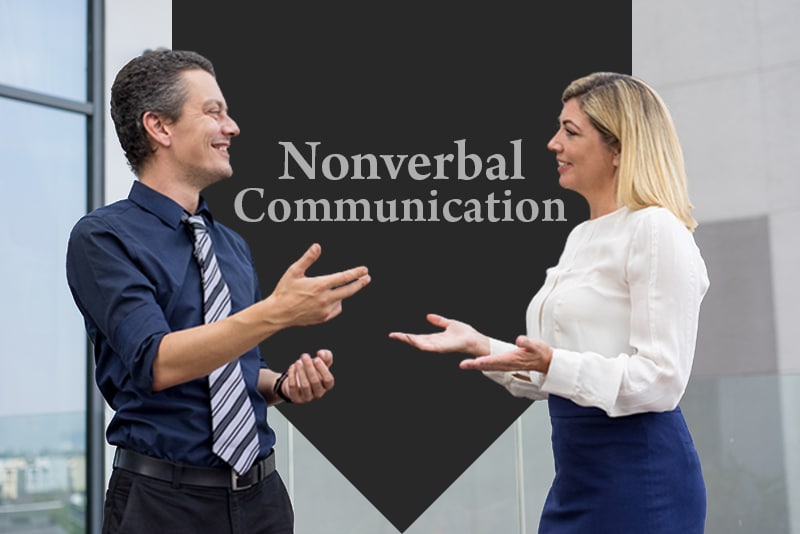Nonverbal communication refers to the body language we use to get a message across. Studies suggest that facial expressions, hand gestures, and other signals constitute about 80 percent of what we communicate, with only 20 percent conveyed verbally. This is crucial in the world of litigation. While words matter, Lawyers are well aware that non-verbal expressions often convey more than what words do. In fact, audio transcription services for lawyers focus on identifying all nonverbal communication, such as pauses, laughter, crying, sighing, and so on in court proceedings and depositions.
Nonverbal communication is used for expressing emotions and reinforcing, substituting for, or contradicting verbal communication. While nonverbal communication matters everywhere, this blog focuses on its impact in the workplace and on ways to improve body language. With virtual meetings on the rise, nonverbal communication has a special significance in avoiding misunderstandings and ensuring a smooth workflow.
Why Nonverbal Communication Matters at Work
The increasing use of emojis in digital communication at work is believed to help people make a point with fewer words. But when you’re face to face with your co-workers or managing a team, you should know that nonverbal communication “talks” all the time, even when you are not saying anything! Employers also vet non-verbal cues when screening candidates. Body language mistakes can convey the wrong impression. Be it a Zoom meeting or a physical one, or just casual conversation, improving nonverbal communication is important to build to convey your thoughts and needs effectively and build trust and authority.
Ways to Improve Nonverbal Communication
Voice and body language have become important components of our daily communication at work. Here are six ways to improve your nonverbal communication:
- Use non-verbal cues to show you are an active listener: When someone speaks to you, show you are listening. This includes maintaining eye contact, smiling and nodding your head. Listening requires motivation and effort to stay focused and attentive to understand what a speaker is trying to convey and encourage them. Avoid distracting actions like looking at your watch or doodling. Combine these nonverbal cues with verbal ones such as saying ‘yes’ or very good’ to show you are listening, questioning, and clarification.
- Maintain eye contact: Eye contact is an important form of nonverbal communication in one-to-one discussions, meetings, and interviews. Your eyes convey your feelings, level of involvement and interest. In interviews, eye contact creates feelings of trust. When you are in a meeting or giving a speech, make sure you visually engage with everyone in the room. Ideally, this means looking at each person for 2-3 seconds before looking away. Keep in mind that while eye contact is a common nonverbal communication method, its meaning can differ across cultures.
- Pay attention to posture and gestures: Pay attention to the posture of the body, personal distances, facial expressions, gestures and physical movements. Managing these elements correctly can enhance and reinforce your workplace interactions. According to Albert Mehrabian, a psychologist at University of California, Los Angeles, body language and facial expressions constitute 55 percent of communication, and your voice makes up 38 percent. Purposeful hand gestures can add meaning to the spoken word. Sitting correctly without slouching and standing up tall and straight can convey self-confidence at work and in interviews. Avoid crossing your arms over your body as it is said to signal defensiveness. Maintaining an ‘open’ body position generally shows you are open to listening.
- Proxemics: Merriam Webster defined proxemics as the study of the nature, degree, and effect of the spatial separation individuals naturally maintain (as in various social and interpersonal situations) and how this separation relates to environmental and cultural factors. In the workplace, it’s important to be conscious about and extra careful of the space between you and others. Maintain the personal space norms in your office environment.
- Dress right: Every company has its dress code policies. Nevertheless, regardless of whether you wear jeans or dress more formally, it’s important to wear clean clothes and dress neatly and appropriately at all times. What you wear can impact your body language – dressing right can help you project confidence.
- Communicate effectively in virtual meetings: Today, online meetings comprise a large chunk of office communication. Working remotely on various communication platforms in the virtual world has brought new communication challenges, especially when it comes to reading nonverbal cues. When working with teams virtually, using nonverbal gestures such as eye contact and facial expressions correctly is crucial to avoid misinterpretations, miscommunication, and misunderstandings.
While improving nonverbal communication, it’s also important to recognise body language cues in others so that you can better understand their attitudes and feelings. Reading body language has several advantages in the workplace as it will help you to respond appropriately to others and earn their trust.
Many professionals, from law enforcement officers to lawyers and psychotherapists evaluate a person’s body language as part of their work. A professional online transcription company can provide them with verbatim transcripts of interrogations, depositions and other interactions. To capture the meaning correctly, verbatim transcripts include not only the exact spoken words but also the non-verbal sounds such pauses, sighs, laughter, and more. Verbatim transcripts of video recordings will also include non-verbal communication such as hand gestures.




